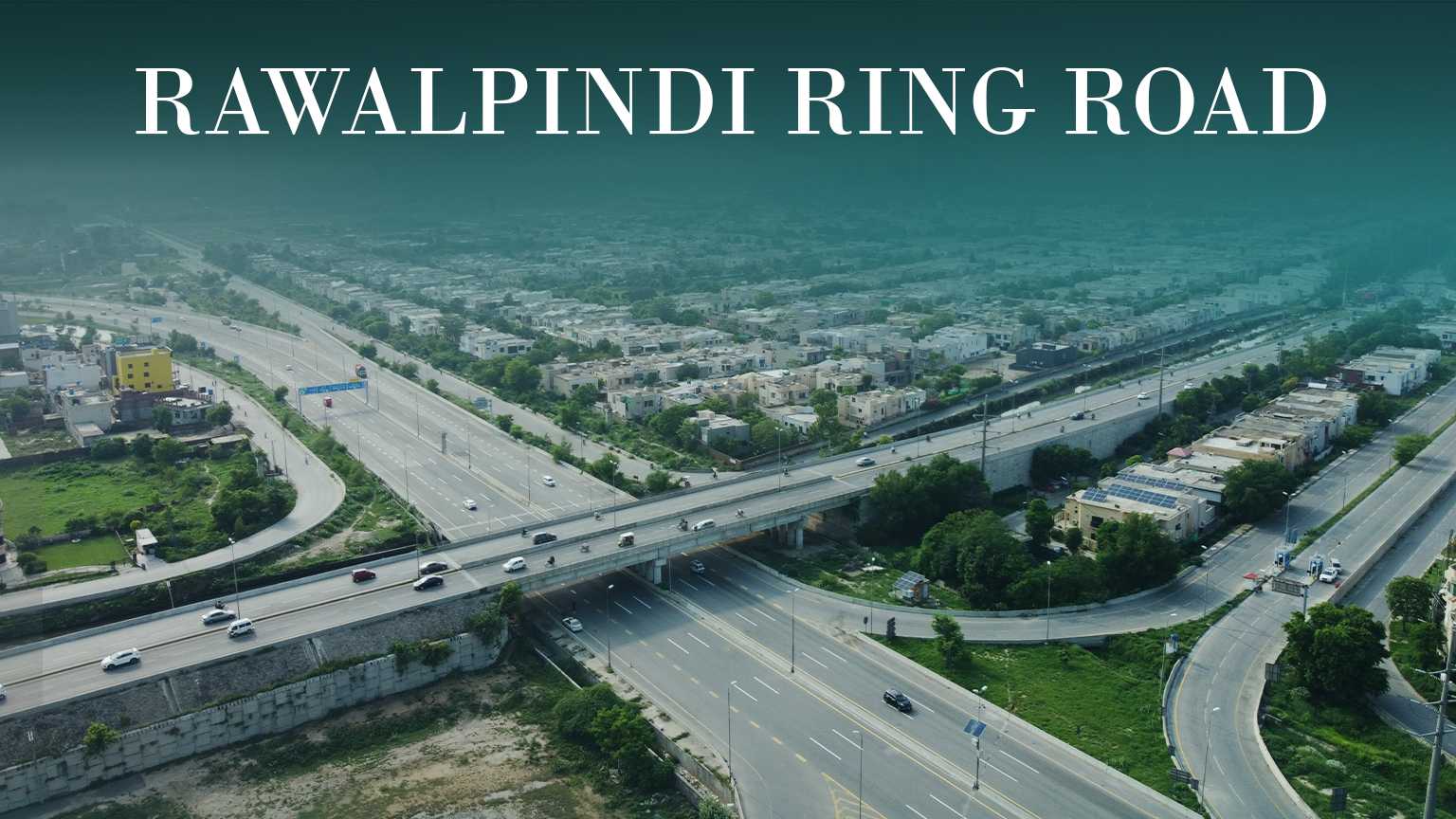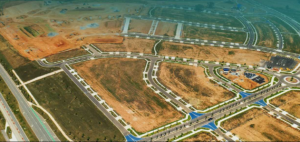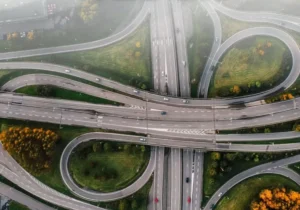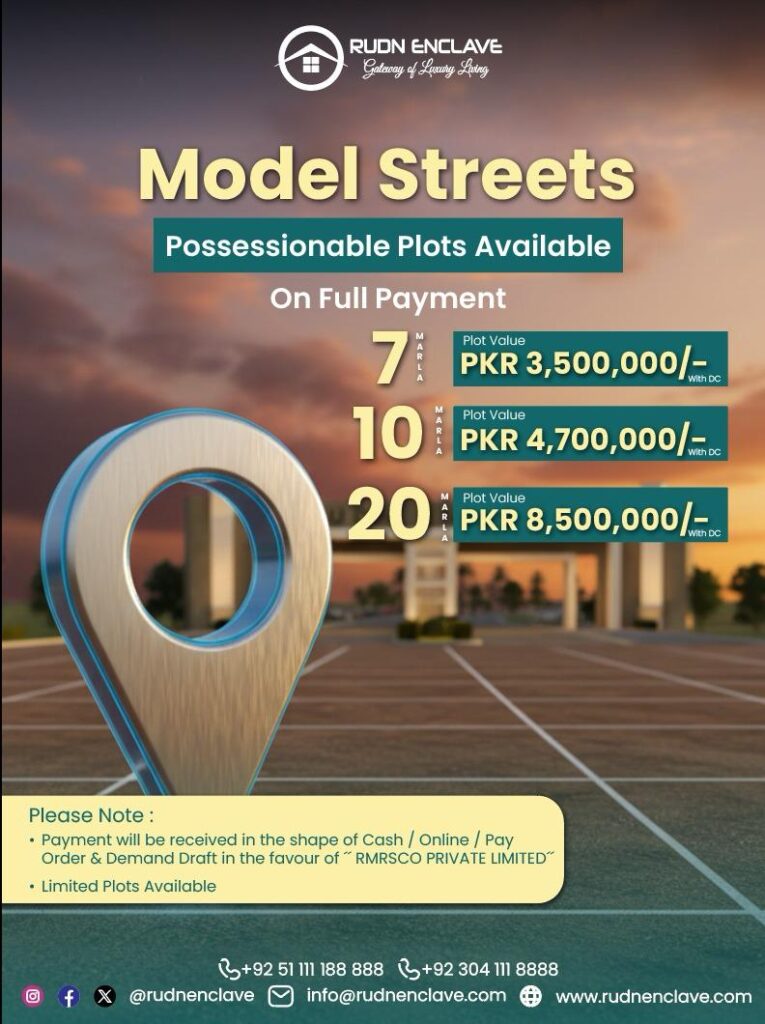The Rawalpindi Ring Road project, one of the most anticipated infrastructure developments in Punjab, has once again received a revised completion deadline. With major upgrades, cost revisions, and new engineering requirements, the project now promises greater long-term benefits for Rawalpindi, Islamabad, and surrounding real estate hubs like RUDN Enclave.
Below is a complete breakdown of the latest updates and what the new deadline means for the region.
Table of Contents
Toggle1. Introduction
The Rawalpindi Ring Road is a transformative 38.3 km corridor designed to reduce traffic congestion, improve connectivity, and open new economic gateways around the twin cities. Recently, the Punjab government officially extended the project’s deadline and revised its cost structure due to major engineering changes.
This project is particularly crucial as it will streamline traffic between Rawalpindi, Islamabad, Motorway M-2, GT Road, and upcoming residential and commercial developments in the southern zone of Rawalpindi.
2. Background of the Rawalpindi Ring Road Project
Original Vision and Objectives
The core vision of the Rawalpindi Ring Road is to:
-
Divert heavy traffic away from congested city roads
-
Reduce travel time between key highways
-
Connect emerging real estate corridors including Chakri Road, Adiala Road, and Motorway M-2
-
Promote planned urban expansion
Initial Cost and Design
Initially, the project was approved with a budget of Rs. 33 billion, covering:
-
A 38.3 km-long six-lane highway
-
Multiple interchanges and flyovers
-
Link roads connecting major regions
-
Improved road infrastructure to support long-term city expansion
History of Delays
The project has seen multiple delays due to:
-
Political transitions
-
Design changes
-
Administrative challenges
-
Funding revisions
Despite the setbacks, the project is now progressing consistently under the supervision of the Rawalpindi Development Authority (RDA) and FWO.
3. Major Update: Government Revises PC-I & Deadline
3.1 Cost Revised from Rs. 33B to Rs. 50B
The Punjab government has revised the PC-I, increasing the budget from Rs. 33 billion to Rs. 50 billion.
This cost escalation is primarily due to:
-
Redesigning the Thallian Interchange
-
Adding more lanes and support structures
-
Future-proofing the road to handle increasing traffic
-
Enhancing embankments, bridges, and safety barriers
These upgrades make the project more robust and capable of supporting long-term transportation needs.
3.2 New Completion Deadline: March 2026
Originally scheduled for December 2025, the new deadline is March 2026.
Why the delay?
-
The Thallian Interchange required a complete redesign
-
Additional engineering work exceeded the original timeline
-
Ensuring future traffic capacity was more important than rushing completion
Despite the extension, officials confirm steady progress and aim for timely completion under the updated schedule.
4. Construction Progress So Far
4.1 70% Work Completed
According to RDA updates:
-
70% of the project is already completed
-
FWO is working at full pace across all major segments
-
Earthwork, leveling, and base preparations are nearly complete in many zones
Segment-wise progress shows strong development from Banth on GT Road to Thallian Interchange.
4.2 Road Carpeting & Structural Work
Key achievements so far:
-
Large stretches of the road have been fully carpeted
-
Bridges and underpasses are nearing completion
-
Drainage systems and protective embankments are being constructed
-
Finishing work on several intersections is actively ongoing
5. Thallian Interchange: Main Reason for Delay
5.1 Need for Redesign & Future-Proofing
Traffic projections showed that the original Thallian design would not sustain future load. Therefore:
-
Lanes were widened
-
Merging sections were redesigned
-
The structure was strengthened for long-term usage
5.2 Increased Cost Due to New Design
The expansion alone increased project cost by Rs. 17 billion, covering:
-
Extra ramps
-
New retaining walls
-
Bridge expansions
-
Advanced safety infrastructure
This update ensures the interchange will efficiently support motorway traffic for decades.
6. Government & RDA Statements
RDA Director General Kinza Murtaza confirmed that the project remains on track for the revised deadline.
Chief Minister Maryam Nawaz had earlier instructed authorities to aim for a December 2025 completion, but the redesign work made this unrealistic.
The executing agency, FWO, has now aligned its construction schedule to meet the March 2026 deadline.
7. Strategic Importance for Surrounding Housing Projects
7.1 Infrastructure Boost for Southern Rawalpindi
The Ring Road directly uplifts the value and accessibility of:
-
Adiala Road
-
Chakri Road
-
Motorway-adjacent projects
7.2 Connectivity Enhancement for New Corridors
The corridor links:
-
GT Road
-
M-2 Motorway
-
Islamabad Airport
-
Chakri & Adiala Road Zones
This creates a major development belt, benefiting residential schemes, commercial projects, and industrial zones.
8. Impact of Rawalpindi Ring Road on RUDN Enclave
8.1 Prime Location Adjacent to Ring Road
RUDN Enclave is strategically located between Adiala Road and the planned Rawalpindi Ring Road Interchange, making it one of the biggest beneficiaries of this mega project.
Direct access from Ring Road significantly enhances its:
-
Connectivity
-
Market appeal
-
Future growth potential
8.2 Faster Connectivity for Residents
Once the Ring Road is operational, RUDN Enclave residents will enjoy:
-
Faster travel to Rawalpindi city
-
Quick access to Islamabad International Airport
-
Seamless entry to Motorway M-2
-
Direct connection to GT Road via interlinked corridors
This makes RUDN Enclave ideal for families, professionals, and overseas Pakistanis.
8.3 Rise in Property Value
The project is expected to increase real estate value across all blocks of RUDN Enclave, particularly:
-
Overseas Block
-
Executive Block
-
Commercial avenues
Historical trends show that infrastructure developments like Ring Road significantly boost property prices. With completion expected in March 2026, investors may see substantial appreciation.
8.4 Boost to Commercial and Overseas Blocks
Improved traffic flow and accessibility directly uplift:
-
Commercial investments
-
Retail opportunities
-
Housing demand in the Overseas Block
This makes RUDN Enclave a top choice for local and overseas investors.
8.5 Why RUDN Enclave Investors Should Stay Updated
Investors should closely follow Ring Road updates because:
-
Development timelines influence property prices
-
New interchanges may open direct access routes
-
Early investment before completion ensures higher ROI
9. Expected Benefits of the Ring Road After Completion
9.1 Reduced Traffic Congestion
-
Heavy traffic will bypass inner Rawalpindi
-
Daily commutes become faster and safer
9.2 Real Estate Expansion
-
Opening of new investment zones
-
Growth in housing societies, commercial areas, and industrial projects
9.3 Trade & Economic Growth
-
Faster goods transport
-
Improved logistics for businesses
-
Boost to local employment and regional economy
10. Remaining Challenges
Despite strong progress, challenges remain:
-
Weather-related delays
-
Supply chain issues
-
Approval of remaining structural designs
-
Coordination between agencies
11. Conclusion
The Rawalpindi Ring Road is progressing steadily, with an updated deadline of March 2026 and a revised cost of Rs. 50 billion. Although delays occurred due to the essential redesign of the Thallian Interchange, the upgrades ensure long-term durability and traffic efficiency.
For housing societies like RUDN Enclave, the project is a game-changer bringing unmatched connectivity, future value appreciation, and enhanced livability. As the project nears completion, the entire region is set to experience a major transformation in infrastructure, real estate, and economic activity.







